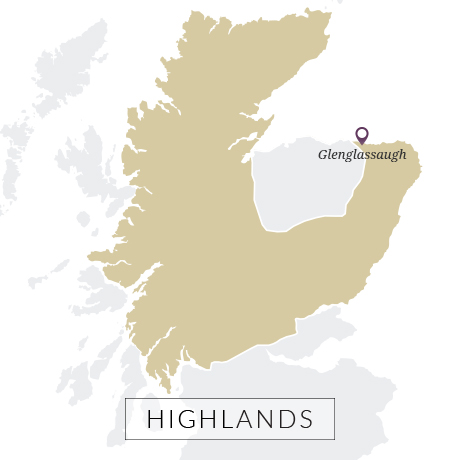Portsoy
A long-defunct distillery at Portsoy, on the Moray Firth. Also known as Burnside.


Only the presence of two stainless steel washbacks (part of a 1966 refurb) alters the impression that little has changed. The new style is medium weight and very fruity with a heavy honeyed floral character. Some peated spirit is also made.

A late-Victorian distillery, Glenglassaugh was built in 1874 by local businessman James Moir and 18 years later became part of Highland Distillers. It didn’t have a huge amount of time to prove itself as a downturn in the market saw it close in 1907 and not re-open until 1960, when once again the market was showing a sharp increase.
Blenders however found it a difficult customer, one of those highly individual malts which didn’t rub along particularly well with other elements in a blend. Had the single malt market been up and running in the 1970s its story might be very different, but its sheer awkwardness meant it was deemed surplus to Highland’s requirements when the whisky loch was filling in the early 1980s and firms were rationalising their estates. When it closed in 1986, no-one thought it would ever re-open.
Amazingly however it did. In 2008, a Russian-financed firm bought the plant and restarted production. In 2013, it changed hands once again, becoming the third member of the BenRiach Distillery Co. [with Benriach and Glendronach].
Although there is obviously a massive 22-year hole in stock, releases are being cleverly balanced between occasional (very) old bottlings and incremental works in progress from the new regime.
Glenglassaugh was purchased – along with Benriach and Glendronach – by Jack Daniel’s producer Brown-Forman in 2016.


 Distillery
Distillery
A long-defunct distillery at Portsoy, on the Moray Firth. Also known as Burnside.


 Distiller
Distiller
The story of Glenglassaugh distillery’s operator is a true phoenix-from-the-flames tale.